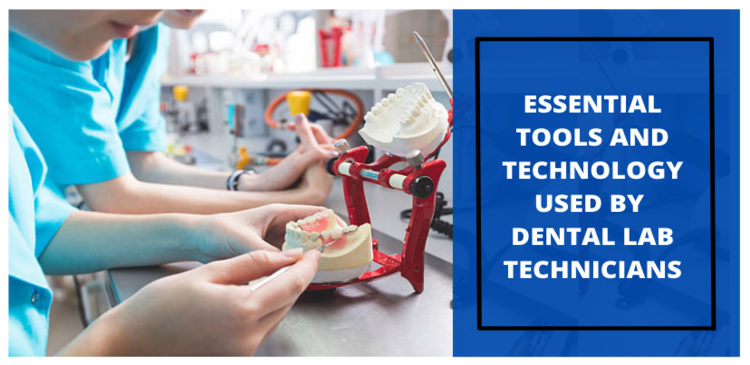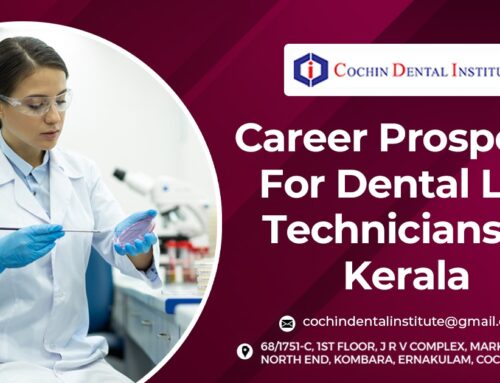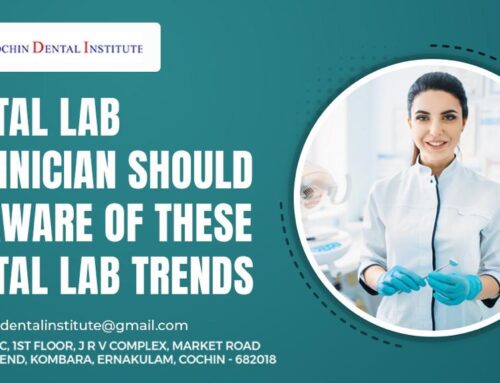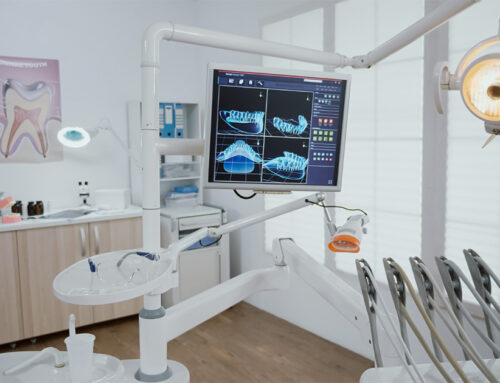There is certain equipment that is crucial in a dental lab. It is vital for every aspiring dental lab technician to know about the different tools and technology that are employed in their labs. The following article provides insight into the essential tools and technology that are used by dental lab technicians. The work is very tactile, combining both artistry and technology, it falls into two categories: restorative dentistry and orthodontics.
RESTORATIVE DENTISTRY
This happens when a patient’s teeth are damaged due to tooth decay, disease such as periodontitis or an accident. In this case the affected tooth must be replaced so that the patient can function normally. The job of the lab technician here is to make the replacement tooth or prosthetic.
Creating the best dental work requires a certain amount of skill from both the dentist and their laboratory. Sometimes restoration can be achieved in the chair and sometimes they have to be sent to the laboratory. Whether you are a dentist or a lab technician, knowing the right equipment can make all the difference.
TOOLS AND TECHNOLOGY THAT ARE ESSENTIAL AND IMPROVE RESTORATIVE WORKFLOW
-
HAND TOOLS
- Facebow and Articulator– A facebow and articulator go hand in hand. The facebow is the clinical piece used for the patient’s mouth while the articulator is mostly on the laboratory side. It allows for a true representation of the patient’s mouth in the model phase that allows the laboratory to know how the teeth come together and also predict how the jaw moves and at what angle.
- Carving Tools– These are used for sculpting wax and can be used for specifically for defining details in dentures. It is used to carve around the gingival crest of a denture. Another tool is the Lecron carver used for denture base creation.
- Leaf Gauge– It is an inexpensive tool comprised of several thin leaves and is used to measure the bite.
- Acrylic Mixer– This is used to ensure that the resulting product is smooth and bubble free.
- Clamps– Laboratories depend on clamps for fabricating restorations and can also be used for specialized, specific functions. It also helps make cementing hybrid implant cases quite a bit easier.
- Diamond-impregnated Rubber Wheels- It helps restorations get a smooth finish.
-
DIGITAL WORKFLOW
- Digital Cameras– It can help doctors and labs communicate on cases. The pricier DSLR cameras are the best but a good enough camera in your pocket will suffice.
- STL Viewers– When digital dentistry cases are being designed on a computer, the resulting file (an STL file) can be shared with the rest of the team. While the file is normally viewed on a computer, viewing can be made even easier with an STL viewer. The viewer can be downloaded even on a phone, improving communication between doctors and labs.
- Intraoral scanner– Doctors are foregoing traditional impression materials and using intraoral scanners to take digital impressions. The scanners are praised for their ease of use and accuracy. It is much better in taking digital impressions instead of the traditional ones.
- Virtual Prescriptions– The intraoral scanner allows you to send a virtual prescription to the laboratory, giving the labs an understanding of what the doctor wants.
- Conebeam scanners– When conebeam computed scanners are employed, they provide a patient’s anatomy in detail, allowing the doctor to see inside the patient’s skull, providing a detailed view of the patient’s anatomy. They are expensive but useful, especially for implant placement, because they show exactly where the implant should go. Since the scan is digital, it can be merged with other data to help doctors and laboratories create the best restorations.
- Chairside milling system– It is used to grind away or carve a dental restoration from a block of ceramic or any other material with help of a rapidly spinning bur.
- 3D Printing– It is used to produce orthodontic models, highly accurate crown and bridge models, surgical guides, retainers and aligners, biocompatible dental products such as dentures, splints etc.
-
OTHER TECHNOLOGY
- CAD/CAM– It is the fashion in restorative dentistry but it’s not the only technology available in the office or the lab. This system allows the dentist to create a finished inlay in as little time as possible.
- Shade Matching– When restoring the tooth in a dental clinic, colour matching of dental restorative materials with the patient’s tooth is performed using a shade guide. The shade guide is a standard model consisting of several shade tabs based on the colour distribution of natural teeth. A digital shade matching system removes the potential for human errors.
ORTHODONTIC DENTISTRY
It is a branch of dentistry that deals with the diagnosis, prevention and correction of mal-positioned teeth and jaws and misaligned bite patterns.
Orthodontic technician is tasked with the job of manufacturing well fitted orthodontic appliances and devices that help correct malocclusions or misaligned dental arches that result in improper bites. They also construct devices such as:
- Palatal expanders
- Headgear
- Retainers
- Separators or spacers
- Elastics
- Braces
- Pendulums
- Splints
- Bite openers
- Positioners
- Clasps
- Twin block appliances
To construct such devices, orthodontic technicians use technological manufacturing equipment, such as computer-aided milling equipment, to manipulate wax and metal-based materials with accordance to measurements from moulds or impressions of patient teeth. Orthodontic technicians must know to use this equipment to form, grind, polish, carve and assemble appliances from doctor instructions and specifications perfectly. Orthodontic technicians usually test appliances for conformance to measurement specifications using articulating equipment. Once appliances are installed in patient mouths, orthodontic technicians may also be responsible for performing necessary repairs to maintain the appliance efficacy and the patient’s comfort. Orthodontic technicians usually work in laboratories, but they may also directly work with patients in orthodontic offices depending on their specific position. In such situations, orthodontic technicians may assess patient needs, take measurements, create moulds or assist doctors with various duties.
We hope this article was useful for you. We encourage you to consider us for this course as we are a dental lab institute in Cochin that offers one of the best dental lab technician courses in Kerala that would help you pave your way for the future.





